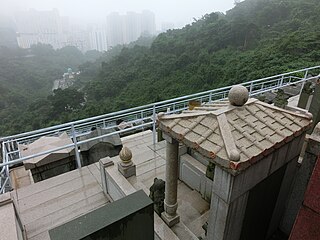
Nichiren Buddhism, also known as Hokkeshū, is a branch of Mahayana Buddhism based on the teachings of the 13th-century Japanese Buddhist priest Nichiren (1222–1282) and is one of the Kamakura period schools. Its teachings derive from some 300–400 extant letters and treatises either authored by or attributed to Nichiren.

Sangha is a Sanskrit word used in many Indian languages, including Pali which means "association", "assembly", "company" or "community"; In these languages, sangha is frequently used as a surname. In a political context, it was historically used to denote a governing assembly in a republic or a kingdom, and for a long time, it has been used by religious associations, including Buddhists, Jains and Sikhs. Given this history, some Buddhists have stated that the tradition of the sangha represents humanity's oldest surviving democratic institution.
Theravāda is the most commonly accepted name of Buddhism's oldest existing school. The school's adherents, termed Theravādins, have preserved their version of Gautama Buddha's teaching or Buddha Dhamma in the Pāli Canon for over two millennia.

The term American Buddhism can be used to describe all Buddhist groups within the United States, including Asian-American Buddhists born into the faith, who comprise the largest percentage of Buddhists in the country.

Po Lin Monastery is a Buddhist monastery, located on Ngong Ping Plateau, on Lantau Island, Hong Kong.
Religion in Hong Kong is characterised by a multi-faith diversity of beliefs and practices.

Humanistic Buddhism is a modern philosophy practiced by Buddhist groups originating from Chinese Buddhism which places an emphasis on integrating Buddhist practices into everyday life and shifting the focus of ritual from the dead to the living.

Chin Kung AM was a Chinese Buddhist monk and scholar from the Mahayana tradition. He was the founder of the Corporate Body of the Buddha Educational Foundation, an organization based on the teachings of Pure Land Buddhism. He was known for his teaching of Pure Land Buddhism and work in promoting inter-faith harmony in Australia and the Asia-Pacific region.

The Buddhist flag is a flag designed in the late 19th century as a universal symbol of Buddhism. The flag's six vertical bands represent the six colors of the aura which Buddhists believe emanated from the body of the Buddha when he attained enlightenment.

Hong Kong Buddhist Association is a Buddhist umbrella organisation in Hong Kong which was founded in 1945. The association has nearly ten thousands individual members including both monastic and laity, and promotes the propagation of Buddhism in Hong Kong. It also provides a series of charity services in Hong Kong, including education, medical, child care, youth activities, elderly care and burial.
The four big families of Hong Kong is a term used to describe the four business families who historically rose to prominence and became influential in Hong Kong. In order of influence, they are Li, Ho, Lo and Hui family.

Tung Lin Kok Yuen is a Buddhist nunnery and educational institution located at No.15 Shan Kwong Road in Happy Valley, Hong Kong. Founded in 1935 by Lady Clara Ho-Tung, it is home to approximately 30 nuns and 50 lay devotees.
K. L. Dhammajoti is a Buddhist monk from Kuala Lumpur, Malaysia. He was ordained according to the Theravada tradition of Buddhism.
Buddhism in China refers to Buddhism that has been developed and practiced in China, based on the geographical location and administrative region instead of a particular Buddhist branch. Buddhism is the largest officially recognized religion in China, and there are three main branches of Buddhism in China: Han or Chinese Buddhism, Tibetan Buddhism, and Theravada Buddhism. There is no definitive answer to the time when Buddhism was first introduced to China, but it is generally believed that this occurred around the time of the Han dynasty.

Yakupitiyage Karunadasa is a Sri Lankan scholar in Buddhist Studies. His main areas of specialization are Early Buddhism and Theravada Abidhamma.

Richard Jun Hong Lu, also known as Lu Tai Zhang by his followers, was a Chinese-born Australian Buddhist faith healer and the founder of the Guan Yin Citta Dharma Door religious movement (觀世音菩薩心靈法門). During his lifetime, the Guan Yin Citta Dharma Door garnered praise from regular and new Buddhist followers, but also drew controversy among some Buddhist organisations.

Hong Kong Buddhist Hospital is Buddhism founded Community hospital with 324 beds in Lok Fu, Hong Kong, within walking distance of Lok Fu station. It is under the Kowloon Central Cluster managed by the Hospital Authority. Hospital Chief Executive is Dr LAU Sze-ting.

Hong Kong Buddhist Cemetery is a private cemetery located in Cape Collinson, on Hong Kong Island, Hong Kong. It is managed by The Hong Kong Buddhist Association (香港佛教聯合會). The cemetery was completed and opened in 1963.















